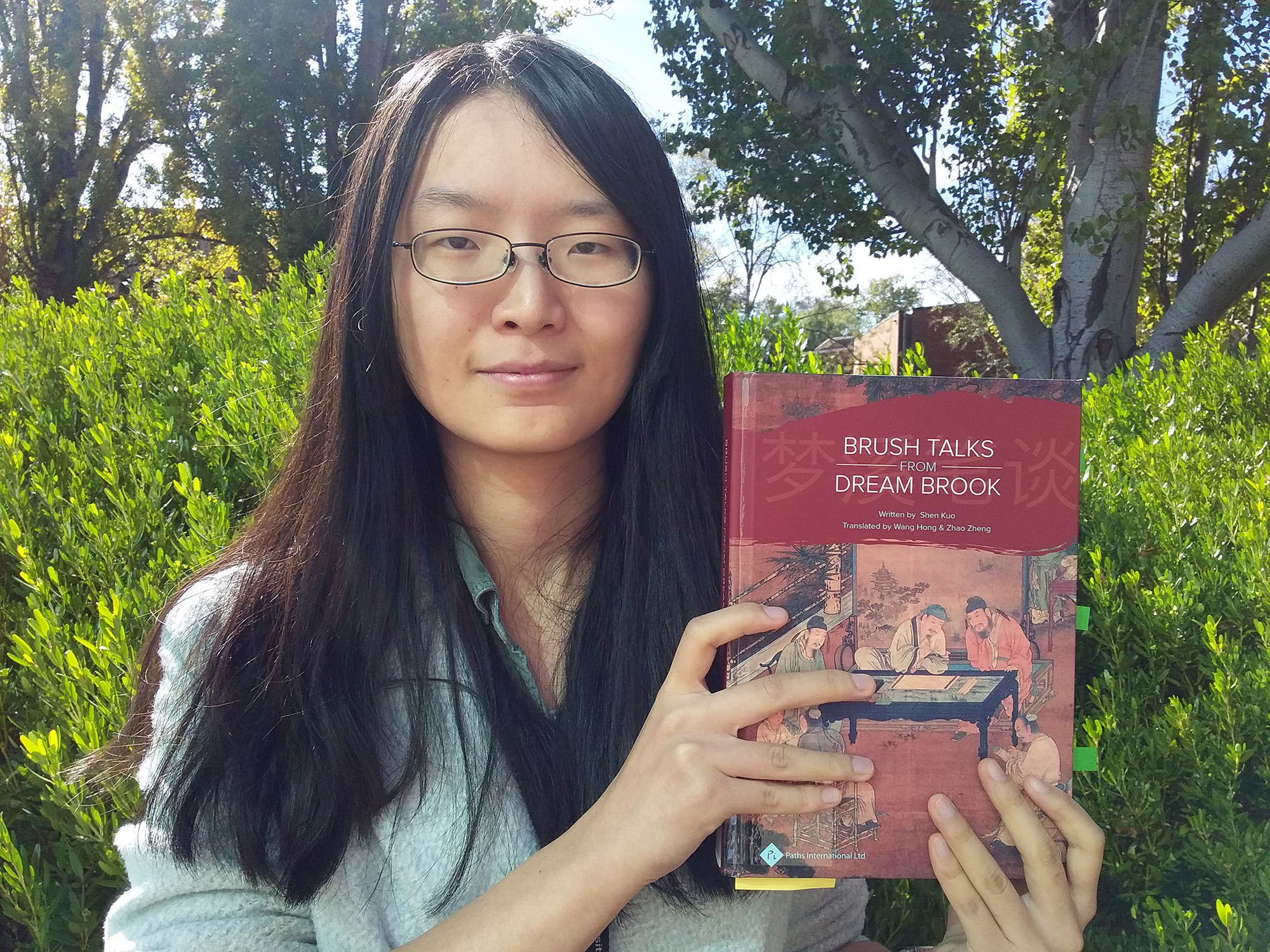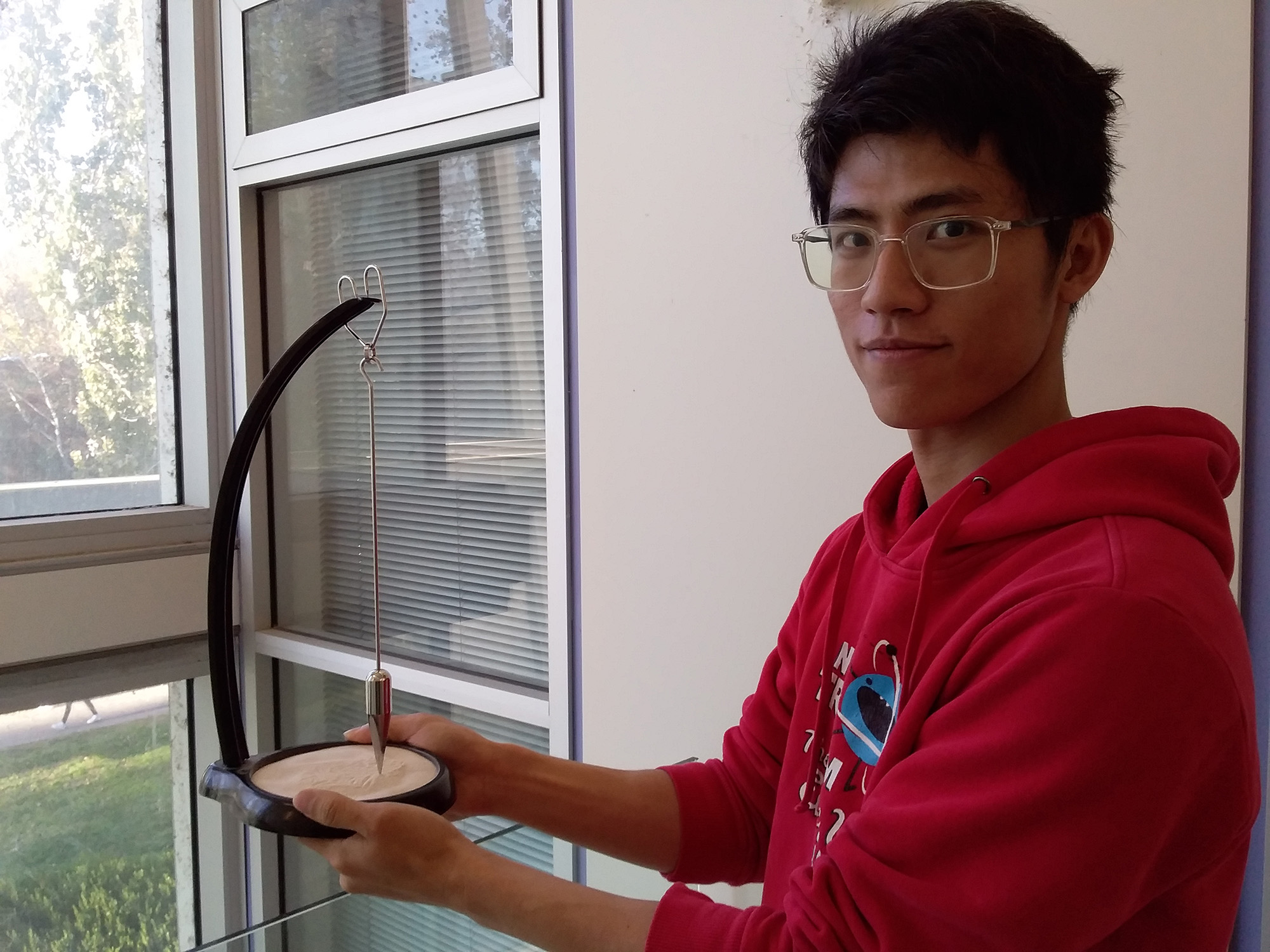SCOM students unearth science communication history

What do an eleventh century encyclopedia, a nineteenth century high protein diet and a 67 metre brass pendulum have in common?
They’re all historical examples of science communication, and they’re all the subjects of CPAS student assignments in 2019.
Making Modern Science is one of the newest science communication courses for ANU undergrads and postgrads, having run since 2017.
The course examines the history of science communication and science from a global perspective, and explores the cultural infrastructure of science, including the political realities of publishing, funding and accolades in the scientific world.
‘It’s a different sort of sci com course,’ said course convener Dr Lindy Orthia, who originally designed the course but taught it for the first time this year. ‘In it I aim to challenge stereotyped versions of the history of science that we often encounter at school and in popular culture, and open up new questions of what science is, and the role played by things like science communication in defining it.’
Like other ANU SCOM courses, Making Modern Science allows students to bring their disciplinary interests and personal passions into their assessment. For this year’s first big assignment, students each chose a historical item related to sci com and analysed its production, messages and reception with respect to big picture histories of the discipline.
‘Marking these assignments was so much fun,’ Dr Orthia said. ‘The students dug up some really cool pockets of sci com history, much more diverse than I could have imagined. I learned lots!’
Cool pockets of sci com history
If students were unsure, Dr Orthia recommended they analyse a nineteenth century British science periodical, simply because historians have already published so much on that place, time and medium it would make the assignment straightforward.
Some students followed that advice, but others branched out into new terrain.
Undergraduate Lucy Campbell, who is majoring in science communication, chose Jane Marcet’s book Conversations on Chemistry, first published in Britain in 1806.
‘It wasn’t just your average chemistry book,’ Ms Campbell explained. ‘It was one of the first examples of science communication specifically intended to engage women. From personal experience, Jane Marcet knew the challenges women faced in accessing education at the time and wanted to find a way to bring scientific knowledge into their reach.
‘She did just that, writing dialogue between a cast of three female characters. As it turned out, this conversation in written form was widely successful — and influenced a far wider audience than originally intended. Michael Faraday even credited it as inspiring him to switch from a bookbinding apprenticeship to a career in scientific research. To put it simply, I think this just goes to show what an impact women in science can make.’
Master of Science Communication (MSCOM) student Jenny Duan’s choice was the oldest item anyone chose, a book published in China in 1088.
‘I am so excited about this assignment and the artifact that I chose,’ said Ms Duan. ‘After week 6’s lecture, I realized how badly eastern civilization and science had been ignored by western and even eastern scholars. Therefore, as an Asian student, especially a Chinese student, I really want to introduce some science from ancient China and emphasize the importance of its contributions to the progress of the real-world.
‘I found a book, Meng Hsi Pi T’an by Shen Kua, which was the first book to record movable-type printing technology. This book reminds western scholars to rethink the origins of printing technology from ancient China rather than Germany. After I chose this artifact, I start to explore what “science” was in this book and what differences there were in knowledge classification in ancient China and in the west. This is a definitely tough assignment for me but I really enjoyed doing it.’

MSCOM student Calo Huang did choose a nineteenth century European item, but took a different approach altogether. His item was the original Foucault Pendulum, a spectacular construction built in 1851 to visually demonstrate the fact that the earth rotates.
‘When I was a young kid, I read about the idea of using the Foucault pendulum to show the rotation of the Earth and was totally amazed by it. What a smart solution!’ effused Mr Huang. ‘Like the contemporaries of Foucault, I wondered how he came up with the idea. Later, I was surprised by the fact that despite Foucault’s contribution, many French scientists at that time treated him as merely a model maker. Why?
‘The assignment, alongside with the readings in the first few weeks, offered me a chance to figure out what happened. I was fascinated by the science culture in nineteenth century France and the impact it may have had on a scientist without professional training.
‘Foucault’s life story is legendary and kind of amusing. The more I read more about him, the more I admire him, both as a science communicator and as an experimental physicist. Perhaps that’s because I am not a successful science reporter as he was and I am terribly bad at physics. Anyway, Foucault is so unique a figure at his time, and I’m happy I can write about him and his marvellous pendulum.’

MSCOM student Catherine Lockley also selected an item from the nineteenth century, but again with a twist. Having a passion for sci com about food and nutrition, she chose William Banting’s 1863 Letter on Corpulence, a bestselling book advocating a low carb, high protein diet.
‘Biblically, “there is no new thing under the sun”,’ Ms Lockley remarked. ‘And as depressing as that might be, it turns out that paleo/keto dieting was quite the popular thing in Victorian England. Researching William Banting had me spluttering my tea and annoying my family with, “Oh my God! You’ve got to hear this!” far too regularly.
‘It was all there 200 years ago — the self-made dietary evangelist, the clever use of information technology to disseminate the “diet gospel”, and of course the grumping and harrumphing of the proper scientists. Of course, Banting didn’t have the twinkling baby blues and sun-kissed leanness of our “Paleo Pete”, but he was a diet-guru-megastar for a while there. Body-image, social constructs of acceptable “beauty”... we really haven’t come very far I’m afraid.’k
The most recent item of all those chosen by the students brought the assignment close to home.

Very close to home: sci com major Georgia Elliott chose a CSIRO scientist’s review of the original version of Questacon, which had been constructed at Ainslie Primary School in Canberra by CPAS Honorary Professor Mike Gore in 1980.
Ms Elliott explained her interest in this aspect of sci com history very simply.
‘Working at Questacon, I get to see how the public engage with the centre today,’ she said. ‘But I was eager to learn what science engagement was like when science centres were a new phenomenon.’
Making Modern Science will run again in 2020.
